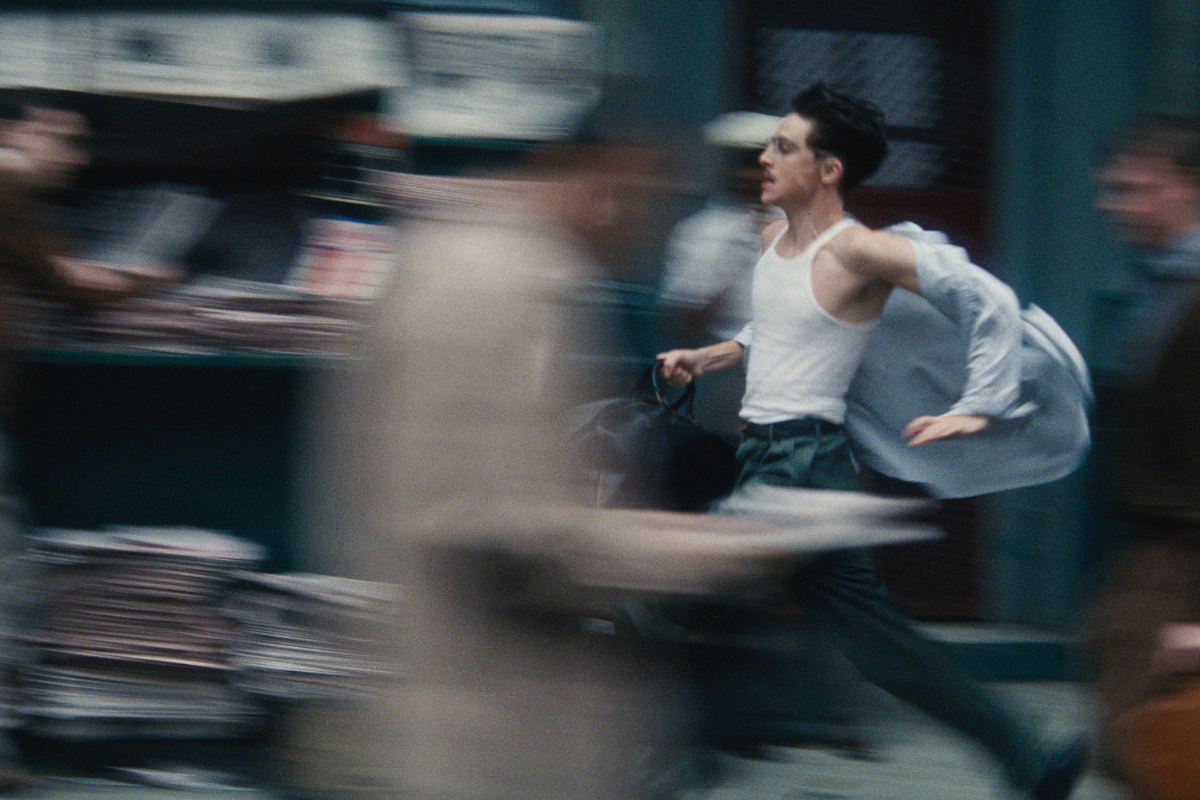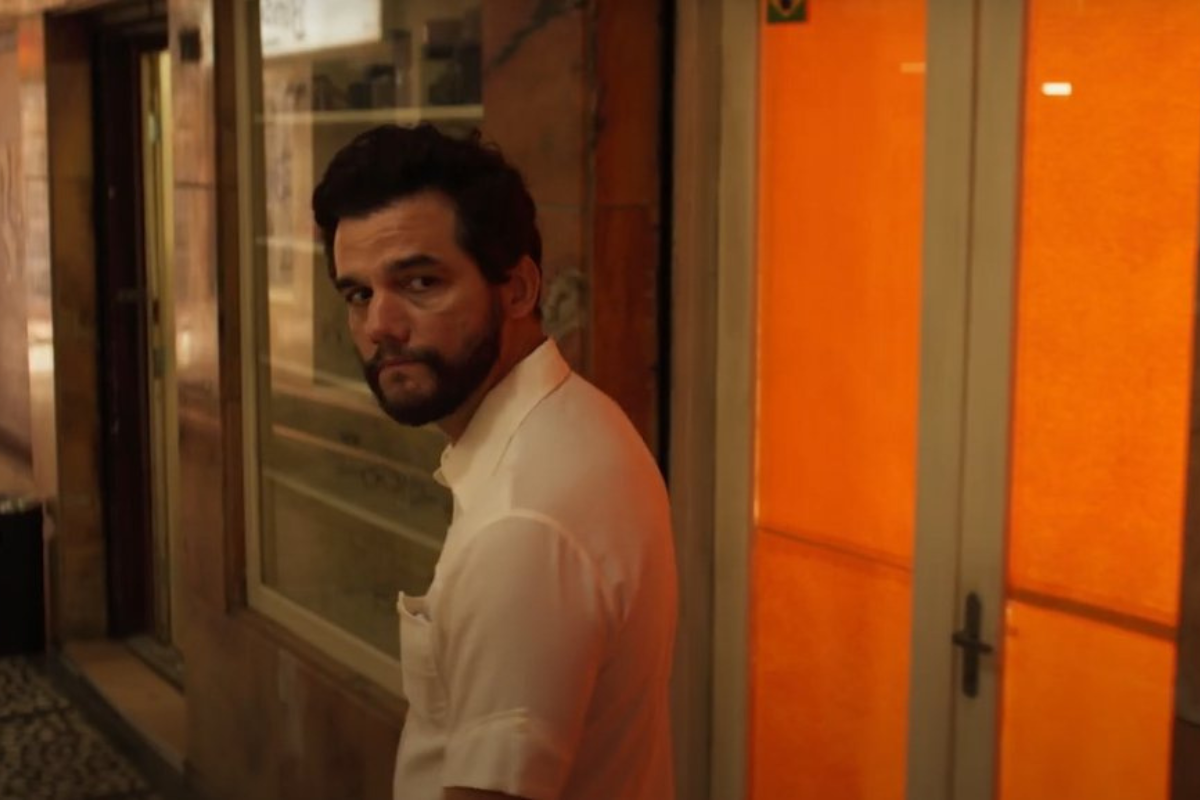UNDERSTANDING SCREENWRITING: Old Ladies, Old Cars, Old Movies
In Understanding Screenwriting, Tom Stempel examines the films Long Shot and Red Joan, then takes us back in time to explore the intricacies of The Sign of the Cross, Old Yesterday and Wild Strawberries.
In Understanding Screenwriting, Tom Stempel examines the films Long Shot and Red Joan, then takes us back in time to explore the intricacies of The Sign of the Cross, Old Yesterday and Wild Strawberries.
Long Shot, Red Joan, The Sign of the Cross, Only Yesterday, Wild Strawberries
Rogen. Theron. Together? Really? Really.
Long Shot (2019. Screenplay by Dan Sherman and Liz Hannah, story by Dan Sherman . 125 minutes)
In 2007, eight years into his acting career, Seth Rogen starred in a romantic comedy called Knocked Up, written by Judd Apatow. He played Ben, a stoner party animal who has a one-night stand with Allison, a beautiful television executive. She gets pregnant.
And decides to stay with him and try to make their relationship work. How dumb is this supposedly smart woman? As written by Apatow and played by Rogen, there is nothing about Ben that would appeal in any way as somebody Allison would be willing to be in a long-term relationship with.
Rogen subsequently stuck to comedy character parts, and rightly so.
Until now. Here is he paired with Charlize Theron, who is not only her usual gorgeous self, but smart: the Secretary of State running for president. (You can make up your own Hillary and Bill jokes here, I have other business at hand.) And the damned thing works. Not perfectly, but pretty well.
What happened? As usual, the answer is in the script and its development. Rogen, aware of the reaction to Knocked Up, realized that they had to develop his character, Fred, into somebody more interesting.
The script began with Dan Sherman, who had written for The Daily Show and The Sarah Silverman Program. (The background on the script is from an article in the Los Angeles Times by Mark Olsen; it is one of the best pieces the Times has run on script development of a film.) The first draft was mostly Sherman dealing with what he felt he has not accomplished in life. The script lay dormant until he worked with Rogen on The Interview (2014). They revived the script and brought in Liz Hannah, who had worked with Theron’s company before and was the first writer on The Post (2017). Her version of The Post was primarily about the woman publisher of The Washington Post, Katherine Graham, but another writer was brought up to build up the role of Ben Bradlee to make it a co-starring part for Tom Hanks. On Long Shot, her job was to build the part of Charlotte for Theron.
One point that everybody Olsen interviewed made was that they were all making the same film, which is crucial to a film working. You have all seen films where the creative staff is not on the same page. That is not the case here, and it makes the film work, in its own scattershot way.
The writers spend a lot of time building up Fred (Rogen’s character). We start with him at a white nationalist rally and only learn in the middle of the scene that he is a reporter for an alternate newspaper. The writers develop how Fred operates as a reporter and writer. Fred has more substance than most of Rogen’s previous characters put together.
Meanwhile, we are getting the details of Charlotte’s life, including dealing with an idiot president. No, not that one. Or that one. Or that other one. He’s an inventive creation, a former actor who played a president on television (the movie was written before the recent election of a comedian who played a president on television in Ukraine to the presidency there) and now wants to quit being president after one term so he can get into movies.
It turns out that Fred and Charlotte knew each other as kids. She babysat him at least once (which leads to a nice detail that ends up not every being dealt with again). She reads his writing and hires him as a writer to punch up her speeches. So you can see how natural it is for them to be working together.
It is nearly half-way into the movie before they have sex. I am not sure the writers needed to wait that long, but I am sure Knocked Up was on their minds. By the time the characters get around to doing the nasty, we have grown to like them and are perfectly happy to see them together. A lot of that is the writing, and a lot of that is the chemistry Theron and Rogen develop, which Rogen and Katherine Heigl never did in Knocked Up.
There are a lot of smart political jokes all over the place. We never know what is going to happen or get said next, which I thought made the movie very lively. I noticed however that the reader comments in the IMDb were mostly negative. Long Shot may be too smart for the room, or it may just be that the film has a very liberal point of view, which offended conservatives. The professional critics on Rotten Tomatoes liked it better. What I liked is that there are jokes at the expense of both liberals and conservatives, including a terrific scene where Fred learns stuff about his best friend and about himself.
A problem the script has is that it gets rushed at the end. A video of Fred masturbating pops up and the Rupert Murdoch inspired figure, played by Andy Serkis, uses it to blackmail Charlotte. But she defends Fred and goes on to win the presidency. There is a lot more that could have been done with that story thread if they had shortened the first part of the film. But then would we have believed Fred and Charlotte as lovers? What do you think? How would you have handled it?
Not Enough Judi.
Red Joan (2019. Screenplay by Lindsay Shapero, based on the novel Red Joan by Jennie Rooney. 101 minutes)
I am not sure why the filmmakers based the film on Rooney’s novel, since it is based on a true story written about in two non-fiction books. I suppose basing on the novel gives them more leeway to play with the story.
“Joan Stanley” is based on the real person, Melita Norwood, a British woman who worked in various research laboratories from the thirties through the seventies. One lab was helping develop the atomic bomb. Norwood, and Joan, had friends in the Communist Party (Norwood was a member, Joan is not), and passed classified information to party members, who passed it on to the Russians. She was not discovered to be a spy until the nineties, 2000 in the film.
The film begins with Joan being arrested and carted off for interrogation. The elder Joan is played by Judi Dench and Dench is wonderful because, well, she’s Judi Dench. Most of the film is told in flashback, with Joan played by Sophie Cookson. You may recognize her from the two Kingsman movies. She is good in the part of Joan and has some nice moments, but most of us would want a little more Dench.
The ending of the movie gets messed up by Shapero. First we get Joan admitting to her adult son why she gave the secrets to the Russians. Then we get her giving almost exactly the same speech to the reporters outside her house. Once would have been enough, and it would have focused on her reasoning and more importantly the implications of that in 2000.
She says that she felt that there should be parity between the Russians (our allies in World War II) and the West. If one side had atomic weapons and the other didn’t, it would more likely lead to war. If there was a balance of weapons, there would less likely be a war between the superpowers of the time. That was not a rationale that people would have bought in the Cold War.
But in a way she was right. She could say in 2000 that the balance did keep the superpowers from going to war in the fifty year period of the Cold War. We can see that now, even if we don’t want to admit it.
Pre-Code Night at Wilder.
Sign of the Cross (1932. Screenplay by Waldemar Young and Sidney Buchman, based on the play by Wilson Barrett. 125 minutes in Cecil B. De Mille’s personal print, shortened in released versions) and Only Yesterday (1933. Screenplay by William Hurlbut and Arthur Richman and George O’Neill, based on the novel by Frederick Lewis Allen. 105 minutes)
Film historians, film archivists, and archive filmgoers have over the last decade or more thoroughly enjoyed digging out, preserving, and watching films from the Pre-Code period. That is the time from the introduction of sound, until the crackdown by Motion Picture Producers Association in 1934, when Mae West was replaced as a major star by Shirley Temple.
Mark A. Vieira, a photographer and film historian, has a new book out about the period called Forbidden Hollywood: When Sin Ruled the Movies. In April he presented two of the classics of the period at the Billy Wilder Theatre where the UCLA Film Archives run their screenings.
First up was Cecil B. De Mille’s The Sign of the Cross. The writers were Waldemar Young, who had been around Hollywood for some time, and brought on later was Sidney Buchman, who went on to write Theodora Goes Wild (1936), Mr. Smith Goes to Washington (1939), and The Group (1966). Now you may wonder what a writer who wrote those movies was doing writing for De Mille, who preferred pompous, fustian dialogue. The answer appears to be in the violence scenes in the Coliseum. While people who have seen the movie mostly remember Claudette Colbert as Poppea in a bath of goat’s milk that pretty much covers her breasts, the violence is particularly brutal and would be the sort of thing cut, which it was in later re-releases, after the Code was toughened up. In the Coliseum scenes, several of the characters get funny lines, which De Mille may have approved to take the edge off. Those lines probably came from the author of Theodora Goes Wild.
The plot may be familiar to you. Marcus, the prefect of Rome, falls in love with a Christian woman, Mercia, at a time when Nero is accusing the Christian of burning Rome. The plot is very similar to the better known Quo Vadis? (filmed many times). Wilson Barrett, a British actor-writer, produced his play in the same year that Henryk Sienkiewicz published the novel Quo Vadis? We do not know who stole from whom.
The second feature that night was the lesser know Only Yesterday. The genesis of this one is rather odd as well. Frederick Lewis Allen’s book Only Yesterday was not a novel, but a popular history of American from World War I up to the beginning of the Depression. Presumably Universal bought it primarily for the title. The storyline seems more likely to have come from Stefan Zweig’s 1922 novel Letter From An Unknown Woman, which was made into a film in 1948 under the original title.
Only Yesterday begins with a party among rich people, most of whom we do not see again, on the day of the stock market crash. Like many scenes in the film, it goes on way longer than it needs to. The three writers may have kept adding when they should have subtracted. Eventually we settle on James Emerson, who gets a letter that takes us into a flashback that takes up most of the movie. In the flashback he is a young soldier about to go off to World War I and he has a quick romance with Mary Lane, a well brought up Southern lady. He goes off to war, completely forgetting about her. Well, this being a Pre-Code movie you can guess that she is pregnant. She can’t stick around her small town, so she goes to life with her aunt in New York, and we get more of the social observation from Allen’s book.
Years later she meets James again, who does not recognize her. He is attracted to her, but she does not tell him who she is. They go back to his apartment as she toys with him. This is the best scene in the film because we know what he does not, and we want to see how she deals with him. Eventually, this being a Pre-Code movie, they get it on again. She does not get pregnant this time, but contracts a fatal disease. Tears are shed, both on-screen and off.
Ingmar’s Car.
Wild Strawberries (1957. Written by Ingmar Bergman. 91 minutes)
This has always been one of my favorite Bergman films, mostly because it is more about emotions that philosophy or religion. The emotions are done with great subtlety, and the filmmaking is incredibly simple.
This popped up in a revival showing recently and not having seen it on the big screen in decades, I went to see it to appreciate again Gunnar Fischer’s great black-and-white cinematography. Fischer shot most of Bergman’s 1950s classics, including Smile of a Summer Night (1955), The Seventh Seal (1957), and The Magician (1958). All of them are worth seeing on a big screen if you have the chance.
The plot description on IMDb for this film is “After living a life marked by coldness, an aging professor is forced to confront the emptiness of existence.” First of all, he is a doctor, not a professor. Secondly, the film shifts back and forth between warm and cold. Yes, Agda, his housekeeper of many years, can be testy with him, but there is a warmth between them as well. Marianne, Borg’s daughter-in-law, who is driving with him to a ceremony where he is to get a life achievement award, can be both snappish and charming. After a particular testy scene in the car, they stop for gas, and the service station owner (a very young Max Von Sydow) not only greets Dr. Borg warmly, he insists on not letting Dr. Borg pay for the gas because of all the doctor has done for his family.
Part of what makes the emotional shifts work in the film is the performance of the great Swedish actor Victor Sjöström as Dr. Borg. Sjöström had started acting and directing in 1912 and Bergman wrote the part for him and would not have done the film without him. Sjöström brings out the humanity in the nuances Bergman had written. If you want to see how to write a great subtle script, look at this movie.
Two minor points. After I saw this movie this time, I was watching television after I got home and noticed that in the car commercials they are shot with drones and probably helicopters, as well as camera cars running alongside. Bergman and Fischer did not have and did not need those toys. The camera just sits by the side of the road and watches. And that’s all they need.
Second point, an item of historical interest. Wild Strawberries was eventually released in the United States in 1959. It was nominated for Best Original Screenplay that year, along with The 400 Blows and North by Northwest. Those three lost to…
Pillow Talk.
Learn more about creating a great story with our self-paced, online course, Word Building: Crafting Screenplays Readers Can Step Into
START LEARNING NOW!
Tom Stempel is a Professor Emeritus at Los Angeles City College, where he taught film history and screenwriting from 1971 to 2011. He has written six books on film, five of them about screen and television writing. You can learn more about his books here. His 2008 book Understanding Screenwriting: Learning from Good, Not-Quite-So- Good, and Bad Screenplays evolved into this column. The column first appeared in 2008 at the blog The House Next Door, then at Slant, and then Creative Screenwriting before it found its forever home at Script.
In the column he reviews movies and television from the standpoint of screenwriting. He looks at new movies, old movies, and television movies and shows, as well as writing occasional other items, such as appreciations of screenwriters who have passed away, plays based on films, books on screenwriting and screenwriters, and other sundries.
In September 2023 Tom Stempel was awarded the inaugural Lifetime Achievement in the Service of Screenwriting Research by the international organization the Screenwriting Research Network.






